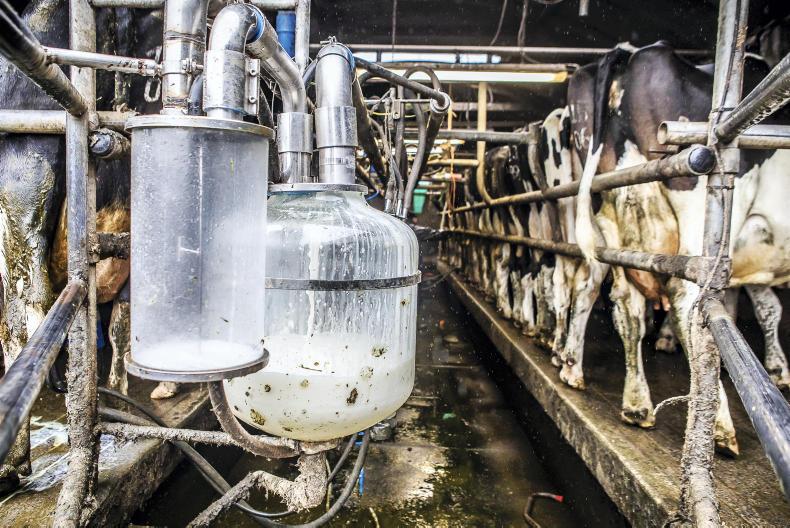The European Commission has approved cows' milk for use as a fungicide, virucide and disinfectant.
In 2017, an application was lodged by Basic-Eco-Logique for the approval of raw milk as a "basic substance" in plant protection products and disinfectants.
Cow milk does not have an inherent capacity to cause endocrine disrupting, neurotoxic or immunotoxic effects and is not predominantly used for plant protection purposes but nevertheless, is useful as a plant protection product.
Milk is now approved for use as a diluted foliar spray to treat powdery mildew in grapevines, pumpkins, cucumbers and soya beans.
Disinfectant
It has also been approved as a disinfectant for glove fingertips and mechanical cutting tools against viruses such as tobacco mosaic virus, tomato mosaic virus, pepper mild mottle virus and cucumber green mottle mosaic virus.
When using milk as a disinfectant, it is recommended to dip the tool or fingertip into milk for two seconds. The milk must be replaced regularly (eg after each crop row) to prevent cross-contamination of the plants.
For reasons of efficacy, it is recommend to use milk with at least a protein content of 3.5%.
Milk allergies
In the original application, milk was intended to be used as a diluted foliar spray for powdery mildew in grapes, vegetables and ornamentals and also as a liquid disinfection of mechanical cutting tools.
However, as milk is regarded as a food stuff, there was deemed to be a potential health concern regarding food allergies to lactose and milk proteins.

Milk is now approved for use as a diluted foliar fungicide spray.
This issue was addressed by limiting the approved use to outdoor applications in vines and to indoor applications on vegetables up until the growth stages where no fruits are present.
The application of milk on soya beans and as a disinfecting agent was not deemed to have any risk in regards to food allergy issues.
Read more
Ag-tech company MagGrow raises €6m in series A funding
EU’s Farm to Fork not a ‘straitjacket’ for farmers – Calleary
Pesticide issues in water on the decline
Drop in water supplies breaching pesticide limits
The European Commission has approved cows' milk for use as a fungicide, virucide and disinfectant.
In 2017, an application was lodged by Basic-Eco-Logique for the approval of raw milk as a "basic substance" in plant protection products and disinfectants.
Cow milk does not have an inherent capacity to cause endocrine disrupting, neurotoxic or immunotoxic effects and is not predominantly used for plant protection purposes but nevertheless, is useful as a plant protection product.
Milk is now approved for use as a diluted foliar spray to treat powdery mildew in grapevines, pumpkins, cucumbers and soya beans.
Disinfectant
It has also been approved as a disinfectant for glove fingertips and mechanical cutting tools against viruses such as tobacco mosaic virus, tomato mosaic virus, pepper mild mottle virus and cucumber green mottle mosaic virus.
When using milk as a disinfectant, it is recommended to dip the tool or fingertip into milk for two seconds. The milk must be replaced regularly (eg after each crop row) to prevent cross-contamination of the plants.
For reasons of efficacy, it is recommend to use milk with at least a protein content of 3.5%.
Milk allergies
In the original application, milk was intended to be used as a diluted foliar spray for powdery mildew in grapes, vegetables and ornamentals and also as a liquid disinfection of mechanical cutting tools.
However, as milk is regarded as a food stuff, there was deemed to be a potential health concern regarding food allergies to lactose and milk proteins.

Milk is now approved for use as a diluted foliar fungicide spray.
This issue was addressed by limiting the approved use to outdoor applications in vines and to indoor applications on vegetables up until the growth stages where no fruits are present.
The application of milk on soya beans and as a disinfecting agent was not deemed to have any risk in regards to food allergy issues.
Read more
Ag-tech company MagGrow raises €6m in series A funding
EU’s Farm to Fork not a ‘straitjacket’ for farmers – Calleary
Pesticide issues in water on the decline
Drop in water supplies breaching pesticide limits







 This is a subscriber-only article
This is a subscriber-only article








SHARING OPTIONS: